Fear and love: the Design Museum taps a fractious design landscape
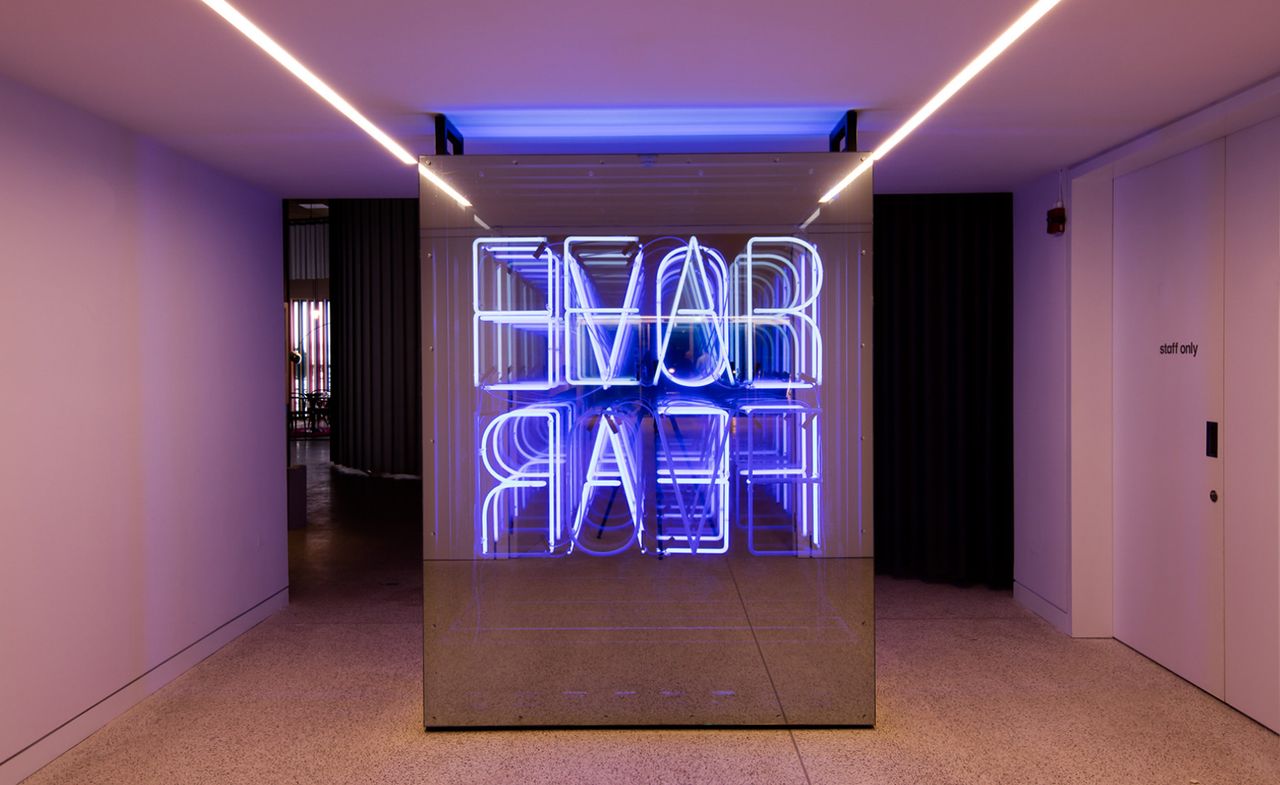
‘Fear and Love – Reactions to a complex world’ is one of the new Design Museum's inaugural exhibitions. Herein, chief curator Justin McGuirk has invited 11 leading designers to respond to the open brief of creating an installation to open debate about how we approach and interpret design today.
Harking back to the first exhibition held by the Design Museum in 1989 – titled ‘Commerce and Culture’ – McGuirk sees a change from the value we once placed on industrial products, now taken for granted in the UK, where it's easy to forget that every single manmade object has an origin and a designer.
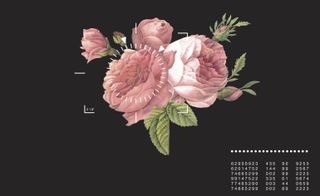
Still from 'Room Tone' by Hussein Chalayan. Courtesy of Hussein Chalayan and Intel
Today, society is defined by a feeling of uncertainty towards the future, as shown in designer Madeline Gannon’s jerking robot arm, Mimus, which detects movement in the gallery with a certain aggression. Hussein Chalayan’s wearable devices project out hidden emotions, exploring increasing cases of anxiety in a society perhaps driven by these behaviour-obsessed devices themselves; while architect Andrés Jaque’s Intimate Strangers examines how network culture is changing our relationship to our bodies and our partners. Perhaps all technology is created around a central fear that we will never find love.
From self-love to selflessness, several projects take an outward-looking approach to design. Arquitectura Expandida, an activist architecture collective, has created Potocinema, an installation showing a series of videos by young people in a school which they built in the poorest part of Bogota. Abstract design collective Metahaven advocates the marine wildlife conservation group Sea Shepherd via a video work; and clothing designer Ma Ke, rejecting the detrimental ‘fast fashion’ tag, displays clothes which have an ethical approach to the land and rural traditions in China.
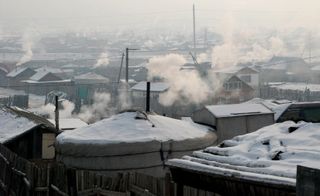
Inside Arquitectura Expandida’s 'Potocinema' installation visitors can watch videos (pictured, film still) which have been made by young people in response to ‘fear’ and ‘love’ in their community
In response to Brexit, OMA has designed a living room filled with objects from the 28 EU member states, suggesting how domestic life has been formed through EU trade, highlighting the fact that, despite our all-consuming desire to be connected, it is clear that we are in fact more disconnected than ever.
The installations demonstrate the increasing polarisation of inward-looking and outward-looking perspectives (selfish vs selfless), the plethora of confusing meanings of the word ‘social’ (social network vs social activist) and an increasing obsession with reading and communicating our emotions. The exhibition opens up questions about how design could be destroying our lives, from increasing pollution in China to perpetuating self-love. The new Design Museum has tapped into these two contemporary emotions and their uneasy juxtaposition.
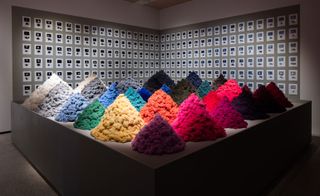
Fibre Market by Dutch product designer Christien Meindertsma explores the lack of recycling culture in the textiles industry, examining the life of products and use of raw materials.
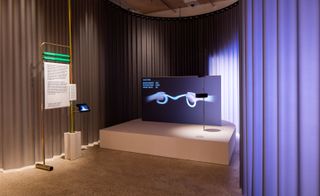
Fashion designer Hussein Chalayan’s installation, Room Tone, is a series of wearable devices which detect emotions and project them out, exposing daily anxieties connected to urban 21st century living.
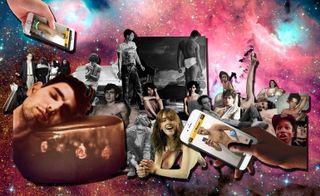
Andrés Jaque’s audio-visual installation Intimate Strangers tells a series of stories about dating apps and how we look for sex and love through social media. Courtesy of Office For Political Innovation
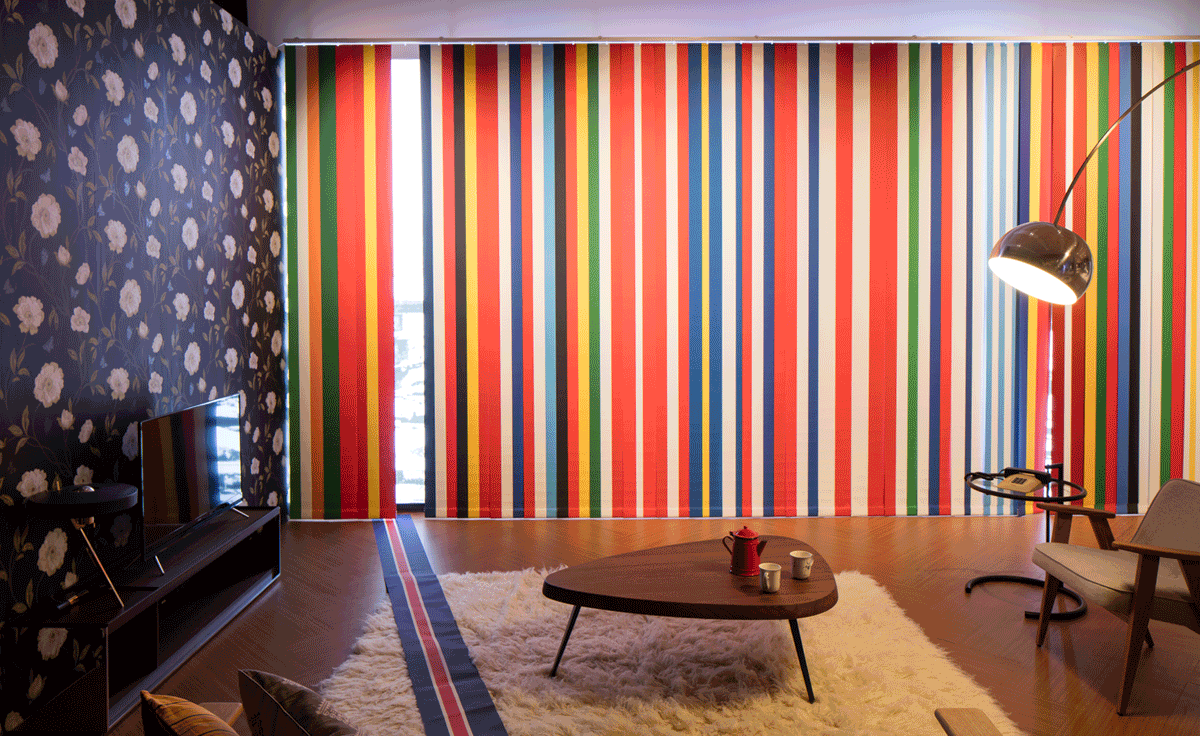
Responding to Brexit, OMA/AMO created The Pan-European Living Room. The installation was furnished with design from each of the 28 European Union member states, showing how domestic life is centred around co-operation and trade between EU countries

Graphic collective Metahaven contributed a short film on marine wildlife conservation group Sea Shepherd to the exhibition. Love Letter to Sea Shepherd advocates the organisation’s activities and is presented alongside a series of graphic flags. Courtesy of Metahaven

Rejecting the detrimental ‘fast fashion’ tag, Chinese clothing designer Ma Ke makes clothes with an ethical approach
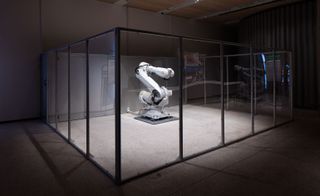
adeline Gannon’s jerking robot arm, Mimus, detects movement in the gallery with a certain aggression
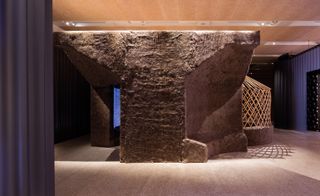
Rural Urban Framework, a research and design think tank based at the University of Hong Kong, was set up by Joshua Bolchover and John Lin to provide design services to charities and NGOs. Their installation shows how to adapt the traditional yurt into a structure for communal life
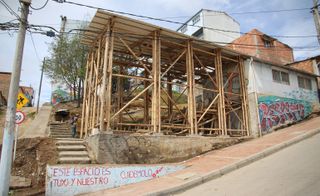
Architecture collective Arquitectura Expandida has created the installation Potocinema, a replica of a school built in one of the most disadvantaged communities of Bogata
INFORMATION
‘Fear and Love – Reactions to a complex world’ is on view until 23 April 2017. For more information, visit the Design Museum website
ADDRESS
Design Museum
224–238 Kensington High Street
London W8 6AG
Wallpaper* Newsletter
Receive our daily digest of inspiration, escapism and design stories from around the world direct to your inbox.
Harriet Thorpe is a writer, journalist and editor covering architecture, design and culture, with particular interest in sustainability, 20th-century architecture and community. After studying History of Art at the School of Oriental and African Studies (SOAS) and Journalism at City University in London, she developed her interest in architecture working at Wallpaper* magazine and today contributes to Wallpaper*, The World of Interiors and Icon magazine, amongst other titles. She is author of The Sustainable City (2022, Hoxton Mini Press), a book about sustainable architecture in London, and the Modern Cambridge Map (2023, Blue Crow Media), a map of 20th-century architecture in Cambridge, the city where she grew up.
-
 Are these the most luxurious Land Rovers ever? Welcome to the refined world of Helderburg
Are these the most luxurious Land Rovers ever? Welcome to the refined world of HelderburgEast Coast Land Rover specialists Helderburg are committed to the very best, transforming the classic British utility vehicle into bespoke individual creations
By Jonathan Bell Published
-
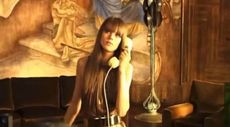 A timeline of David Lynch’s dreamlike perfume commercials, from Calvin Klein to Gucci
A timeline of David Lynch’s dreamlike perfume commercials, from Calvin Klein to GucciDavid Lynch’s perfume commercials, created over a two-decade period, saw the visionary director focus his dreamlike lens on fragrance campaigns for Calvin Klein, Giorgio Armani, Jil Sander, Gucci and more
By Hannah Tindle Published
-
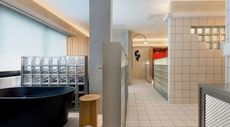 Contrast therapy meets neuroaesthetic design at this Singapore spa and bathhouse
Contrast therapy meets neuroaesthetic design at this Singapore spa and bathhouseReap the benefits of contrast therapy, head-to-toe massage and neuroaesthetic spatial design at the Hideaway spa and bathhouse in Singapore
By Daven Wu Published
-
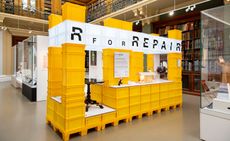 ‘R for Repair’ at London Design Festival displays broken objects, re-formed
‘R for Repair’ at London Design Festival displays broken objects, re-formedIn the second half of a two-part exhibition and as part of London Design Festival 2022, ‘R for Repair’ at the V&A displays broken objects, re-formed
By Martha Elliott Last updated
-
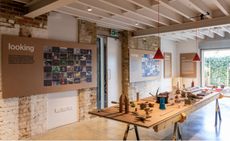 ‘Finding quality through the act of making’: Pearson Lloyd celebrates 25 years of design
‘Finding quality through the act of making’: Pearson Lloyd celebrates 25 years of designPearson Lloyd’s show ‘Change Making’ reflects on past designs from its archives, showcasing the influences on and evolution of the studio, from furniture design to the NHS
By Martha Elliott Last updated
-
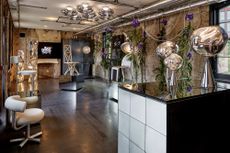 Tom Dixon marks his studio's 20 years with a show of design experiments
Tom Dixon marks his studio's 20 years with a show of design experimentsMushroom, cork, steel coral and more: Tom Dixon showcases an overview of his design experiments as he celebrates his practice's 20 years
By Rosa Bertoli Last updated
-
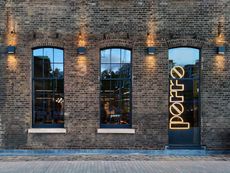 Porro unveils new London showroom at Coal Office
Porro unveils new London showroom at Coal OfficeLondon Design Festival 2022: industrial architecture meets pure geometries in the new Porro showroom, taking over a space within Tom Dixon’s Coal Office to showcase the brand’s systems and furniture
By Rosa Bertoli Last updated
-
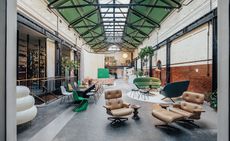 Vitra unveils new London home in the Tramshed, Shoreditch
Vitra unveils new London home in the Tramshed, ShoreditchLondon Design Festival 2022: after a year-long renovation, Vitra opens the door to its new showroom in the heart of Shoreditch
By Rosa Bertoli Last updated
-
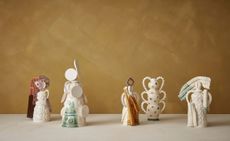 Mudlarking beside the River Thames inspires The New Craftsmen’s makers
Mudlarking beside the River Thames inspires The New Craftsmen’s makersLondon Design Festival 2022: The New Craftsmen’s new collection, ‘Claylarks’, features work from a group of creatives inspired by a River Thames mudlarking expedition
By Mary Cleary Last updated
-
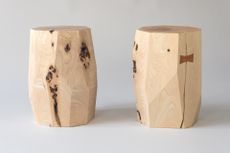 One tree, ten designers: SCP presents The One Tree Project at London Design Festival
One tree, ten designers: SCP presents The One Tree Project at London Design FestivalLondon Design Festival 2022: SCP enlisted ten British designers to create furniture and objects from a felled ash tree from founder Sheridan Coakley's Hampshire garden
By Francesca Perry Last updated
-
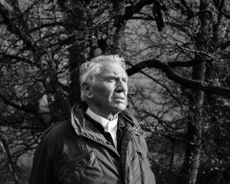 London Design Medals 2022
London Design Medals 2022London Design Medals 2022 are awarded to costume designer Sandy Powell, architect Indy Johar, researcher Joycelyn Longdon and photographer Sir Don McCullin
By Rosa Bertoli Last updated